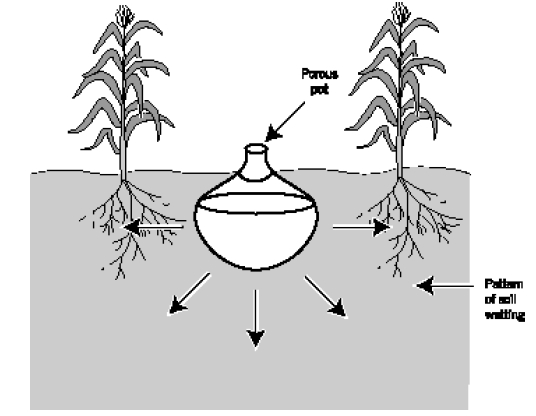Porous clay pots

This is a method of irrigation in which water is stored in clay pots buried in the ground, from where it is slowly released to the plants. This method is good for fruit trees. Such use of soil-embedded porous jars is one of the oldest continuous irrigation methods that probably originated in the Far East and North Africa.
The method consists of:
- Clay pots that are placed in shallow pits dug for this purpose;
- Soil is then packed around the neck of the pots so that the necks protrude a few centimetres above the ground surface;
- Water is poured into the pots, either by hand or by means of a flexible hose connected to a water source.
The pots are made of locally available clay with optimum properties of strength (to resist crushing), permeability (to exude water into the soil at an approximately steady rate), and size (to hold enough water for at least one day’s supply).
The potential of clay-pot irrigation has not been fully exploited by farmers in the eastern and southern Africa region, even though the technology is suitable for small scale farmers. There have not been many reports of previous experience in the region.
Acknowledgements
- Sijali, Isaya V. DRIP IRRIGATION: Options for smallholder farmers in eastern and southern Africa. RELMA, 2001.
